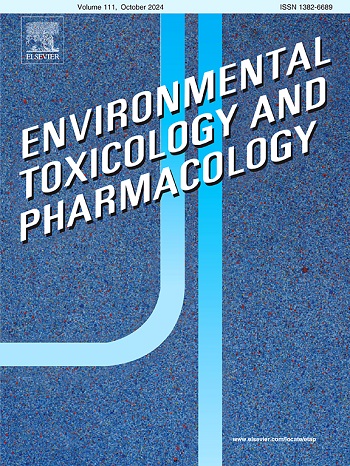从室内到室外:麻醉废气对职业暴露专业人员的影响及相关环境危害--叙述性综述和更新。
IF 4.2
3区 环境科学与生态学
Q2 ENVIRONMENTAL SCIENCES
引用次数: 0
摘要
废麻醉气体(WAGs)是一种世界范围内存在的微量浓度吸入麻醉剂,因为它们被释放到手术室(ORs)和麻醉后护理单位的环境空气中。wag造成室内污染,特别是在缺乏适当清除系统的工作场所,以及职业暴露,同时通过温室气体/臭氧消耗效应促进气候变化。尽管存在这些有争议的特点,但女工继续对职业健康造成危害。职业性接触wag与氧化应激、细胞毒性、基因毒性和致突变潜能有关。本文旨在对WAG监测、WAG对职业暴露人员的影响及其对环境的影响等方面的文献进行分析和更新。暴露的人类和兽医专业人员的认识至关重要。需要实施生物监测措施和WAG职业暴露限制政策。促进可持续的医疗保健系统对于减轻wag对全球变暖的影响也很重要。本文章由计算机程序翻译,如有差异,请以英文原文为准。
From indoors to outdoors: Impact of waste anesthetic gases on occupationally exposed professionals and related environmental hazards – A narrative review and update
Waste anesthetic gases (WAGs) are trace-concentration inhaled anesthetics that exist worldwide because they are released into the ambient air of operating rooms (ORs) and post-anesthesia care units. WAGs cause indoor contamination, especially in ORs lacking proper scavenging systems, and occupational exposure, while promoting climate change through greenhouse gas/ozone-depleting effects. Despite these controversial features, WAGs continue to pose occupational health hazards. Occupational exposure to WAGs has been linked to oxidative stress and cytotoxic, genotoxic and mutagenic potential. This review aims to analyze and update the literature on WAG monitoring, the impact of WAGs on occupationally exposed personnel and their effect on the environment. The awareness of exposed professionals in human and veterinary medicine is crucial. The implementation of biomonitoring practices and WAG occupational exposure limiting policies is needed. Promoting a sustainable healthcare system is also important for mitigating the impact of WAGs on global warming.
求助全文
通过发布文献求助,成功后即可免费获取论文全文。
去求助
来源期刊
CiteScore
7.00
自引率
4.70%
发文量
185
审稿时长
34 days
期刊介绍:
Environmental Toxicology and Pharmacology publishes the results of studies concerning toxic and pharmacological effects of (human and veterinary) drugs and of environmental contaminants in animals and man.
Areas of special interest are: molecular mechanisms of toxicity, biotransformation and toxicokinetics (including toxicokinetic modelling), molecular, biochemical and physiological mechanisms explaining differences in sensitivity between species and individuals, the characterisation of pathophysiological models and mechanisms involved in the development of effects and the identification of biological markers that can be used to study exposure and effects in man and animals.
In addition to full length papers, short communications, full-length reviews and mini-reviews, Environmental Toxicology and Pharmacology will publish in depth assessments of special problem areas. The latter publications may exceed the length of a full length paper three to fourfold. A basic requirement is that the assessments are made under the auspices of international groups of leading experts in the fields concerned. The information examined may either consist of data that were already published, or of new data that were obtained within the framework of collaborative research programmes. Provision is also made for the acceptance of minireviews on (classes of) compounds, toxicities or mechanisms, debating recent advances in rapidly developing fields that fall within the scope of the journal.

 求助内容:
求助内容: 应助结果提醒方式:
应助结果提醒方式:


